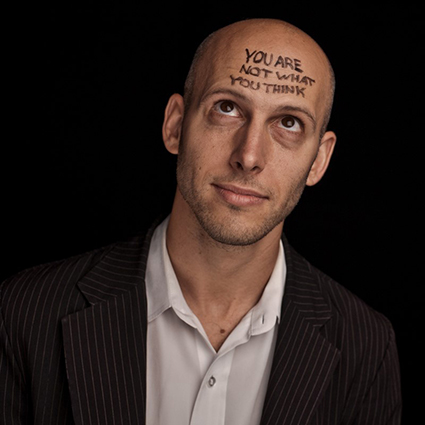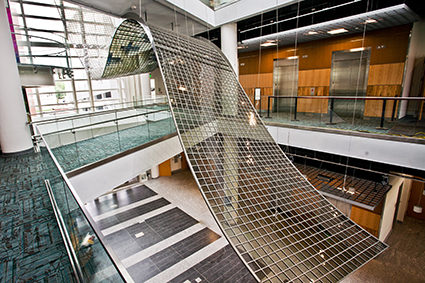Turning Art and Science into Optic Illusion
-
-
slice.mit.edu
Filed Under
Recommended

Through his undergraduate studies, roboticist Jeff Lieberman ’00, SM ’04, SM ’06 balanced his passions for math and science—and for art. “I’d spend four hours a day on math, and then another four hours on art,” says Lieberman, who completed a double major in physics and mathematics. “I knew it would be hard to learn quantum mechanics during art school, so I chose MIT and did art as a hobby.”
After graduation he enrolled in the Media Lab for graduate school, and those passions finally intertwined. He joined the robotics group headed by Associate Professor Cynthia Breazeal, SM ’93, ScD ’00, and worked on art-science hybrids like the Cyberflora, an installation of robotic flowers for New York’s Cooper Hewitt museum that algorithmically generated music and lighting based on viewers’ behavior.
“It was like MIT’s fire hose metaphor,” he says of the design process for that project. “On day one, they said ‘You have eight months to build this—then it’s going in the Smithsonian in February.’ It was the most fun I had at MIT.”
Lieberman has parlayed his Media Lab experience into an eclectic career as a roboticist and artist specializing in kinetic optical illusions. His works include Patterned by Nature, a 90-foot-long sculpture that weaves through the atrium of the North Carolina Museum of Natural Sciences. The sculpture, made of 3,600 tiles of LCD glass whose brightness can be individually controlled, displays nature-inspired animated patterns created by varying the glass’s transparency.
“The pieces that I work on, they work because of the limits of human perception,” he says. “When you take advantage of the fact that those limits exist, you can see things in a totally different way.”
 Patterned by Nature. Image via bea.st
Patterned by Nature. Image via bea.st
Lieberman also mixed art and science as the host of the Discovery Channel’s Time Warp, which ran for 33 episodes in 2008–2009. The show introduced physics by using slow-motion photography to examine everyday events like a soap bubble popping or a dog drinking water.
“It was a great experience, but I tried too hard to insert science facts,” he says. “If an explanation lasts more than seven or eight seconds, it can’t be used on TV. It was tough to come to terms with that.” (Visit the Discovery Channel website to view Time Warp video clips.)
Lieberman’s current project—which will be financed entirely through crowdfunding—blends high-speed imaging with human perception: he’s creating a small, water-based sculpture that uses strobe lights to simulate water droplets moving at glacial speeds.
As for the future, Lieberman hopes to combine his robotics expertise with a new passion: meditation.
“I’d like to mix the worlds of science and physics with the world of consciousness and spirituality,” he says. “Meditative practice can link science and consciousness. It’s the next big scientific revolution, and it’s just starting to bubble.”
For more information on Lieberman, visit his website, bea.st. This article was originally published in MIT Technology Review magazine.







